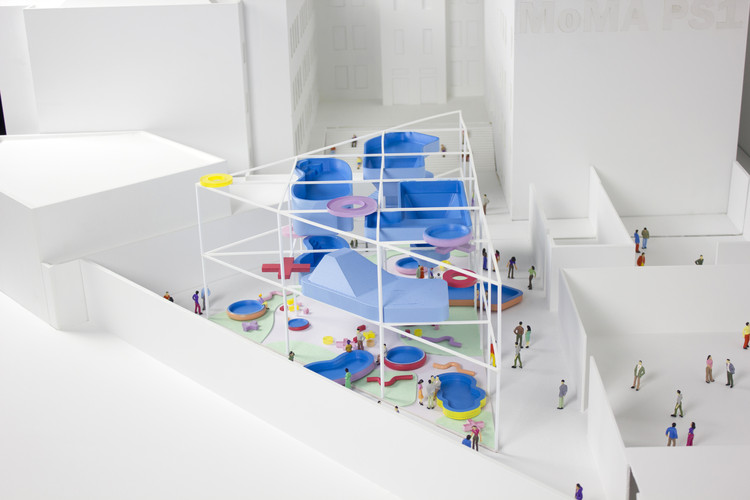
The Second Studio (formerly The Midnight Charette) is an explicit podcast about design, architecture, and the everyday. Hosted by Architects David Lee and Marina Bourderonnet, it features different creative professionals in unscripted conversations that allow for thoughtful takes and personal discussions.
A variety of subjects are covered with honesty and humor: some episodes are interviews, while others are tips for fellow designers, reviews of buildings and other projects, or casual explorations of everyday life and design. The Second Studio is also available on iTunes, Spotify, and YouTube.
This week David and Marina are joined by Jimenez Lai, Founder of Bureau Spectacular to discuss civic and infrastructural spaces in cities; collage architecture; what makes a living room, a living room?; his current project, “Citizens With No Places”; his book “Citizen of No Place”; living and studying at Taliesin West; and suburban developments.
Highlights & Timestamps
Studying civic spaces in cities. (00:00)
Pershing Square, like many other civic infrastructures, is designed to platform public debates as a forum for civic conversations including times of unjust killings of fellow citizens. That’s what that space is designed for, but people don’t use it, [instead they] take it to a street—onto a surface that is meant for vehicular infrastructure. What this means is the vehicular infrastructure doubles as a vehicular and civic infrastructure during times of social upheaval. I feel that this so important as an aspect of understanding downtown urban speeds. (04:28)

Why urban issues matter. (19:40)
Collage architecture (27:27)
I think everything is a collage. If you take the definition of a collage and you zoom into a wall section suddenly you realize there’s a vapor barrier and insulation, if it’s a brick wall, there’s brick veneer. Even a wall detail like, that looks like a mono-detail assembly, is in fact a multi-material assembly. […] Maybe even on an urban scale, it’s almost a game of exquisite corpses being played all the time amongst architects, where within an urban block the first building, second building, third building that constitutes that block may all be designed by different people and therefore the similarities of the block and differences of the textures feels a lot like a collage project. (28:06)

Questioning the definition of the ‘room’ and their activities. (37:00)
What is a living room? Is it just a designation of space where we sit around and eat or hangout? But if we sleep there, does that change the living room? Are you allowed to sleep in a kitchen? If you sleep in a kitchen, do people yell at you or cringe at you? I think cringe for sure, right? Why would anybody sleep in the kitchen. I think these social contracts that we form with the interior designation of spaces, if you take a step back, it feels kind of ridiculous that we do that. If you take a step back, it might be on the one hand a liberating process of thinking about how we can design the things that are rather mundane and stifling, but on the other, it no longer becomes a structural or organizational or programmatic issue, it becomes a behavioral conversation. As far as why I think what we do is so interesting, it’s because architecture touches on the physical manifestation of humanities. (37:34)

Should more architects help write public policies? (43:36)
I sometimes feel like the buildings are designed before any architect can be involved. The massing is preordained, the setbacks are preordained, sometimes the styles are preordained, the number of windows, the fenestration, or even materiality is preordained. I don’t know. I wonder in what ways might we be more active members in that process. (43:50)

Jimenez’s current project, “Citizens With No Places". (54:33)
How Jimenez created the graphic novel, “Citizens of No Place”. (01:01:55)

Living and studying at Taliesin West. Suburban developments are unhealthy. (01:07:55)
When I learned about the Broad Acre City, all I could think about was that Frank Lloyd Wright might be a source of origin for how we think about suburbia. I know that for Wright he was thinking about it as an agrarian solution to resources, but then eventually it turned into something else. There was this kind of expansive attitude as if the United States as a country is limitless in its geographic square acreage, which is not the case. And I would say this process eventually become a chapter in “Citizens of No Place”. I decided to propose that we pack on Board Acre City model and shoot it into space. If it’s confined within a spaceship, there would be no expansion. (01:12:23)
















